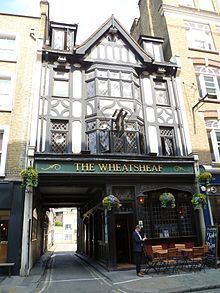 | ||
Bim at rathbone place
Rathbone Place is a street in central London that runs roughly north-west from Oxford Street to Percy Street. it is joined on its eastern side by Percy Mews, Gresse Street, and Evelyn Yard. The street is mainly occupied by retail and office premises.
Contents
Post offices rathbone place picket
History
The street was originally known as Glanville Street.
Inhabitants
The essayist and critic William Hazlitt lived at number 12 from 1799 to 1803.
The music-hall publisher Henri D'Alcorn was based in Rathbone Place: at no. 22A in 1855–7, no. 18 in 1857–60 and no. 8 in 1860–67.
Buildings
On the east side, Number 11 was a grade II listed terraced house.
The house was built around 1718-20 and refronted in the nineteenth century. The ground floor was converted to commercial premises.
Number 11 is now the home of Lazarides Gallery
On the same side is the The Wheatsheaf public house at number 25 which became one of the principal gathering-places of London's bohemian set before the Second World War and where customers included Dylan Thomas.
On the western side of the street was the former Royal Mail depot.
It is being redeveloped by Great Portland Estates into a mix of residential, office and retail units.
A sign on a building for Rathbone Place is seen in the last scene of BBC's Sherlock series 4 finale. This is a nod to the actor Basil Rathbone and the building shown is not part of Rathbone Place.
